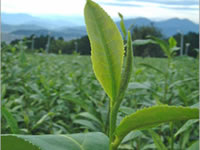DETAILS
Camelia sinensis
English: Green Tea
Sanskrit/Indian: Chai
Russian: Зеленый чай

General information:
Green Tea is native to mainland China, South and Southeast Asia. It is an evergreen shrub or a small tree. It grows wild up to 10 meters. It has a rough, grey bark, dark green, lanceolate to elliptical leaves. They are borne on short stalks, serrated along the margins, hairy when young, deep green and glabrous when older. Flowers are yellow-white, with seven to eight petals. They appear on short branchelets in the leaf’s axils, in slightly drooping clusters of two to three.
Constituents:
Amino acid l-theanine, caffeine, catechin polyphenols, epigallocatechin gallate (egcg),oxalates, fluoride,tannin. Volatile oils, vitamins, minerals, polyphenols
Benefits:
- Green tea polyphenols have demonstrated significant antioxidant, anticarcinogenic, anti-inflammatory, thermogenic, probiotic, and antimicrobial properties.
- Green Tea was a very recognized and utilized herb in traditional Chinese medicine. It was used in treatment of various pulmonary and cardiovascular disorders, including asthma, angina pectoris, peripheral vascular disease and coronary artery disease. Today, numerous studies suggest that Green Tea has enormous health benefits. It is a powerful antioxidant, and as such, it can help in prevention of atherosclerosis. It lowers the risk of heart disease, reducing the levels of cholesterol and triglycerides. Some studies also suggest that Green Tea could protect us against cancer, reduce inflammations associated with Chron’s disease and ulcerative colitis. Everyday consumption of Green Tea is also said to help control blood sugar levels in our body, and acts as prevention against type 1 diabetes. Green tea leaves and extracts are effective against bacteria responsible for bad breath. It also protects the liver from the effects of toxic substances, and can be used in weight loss diets.
